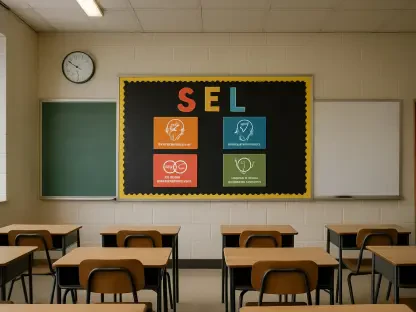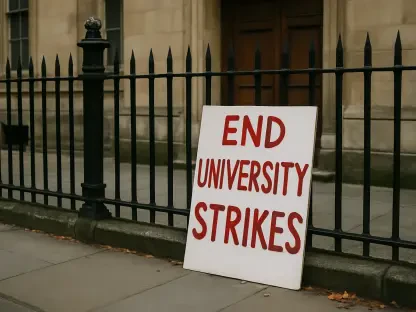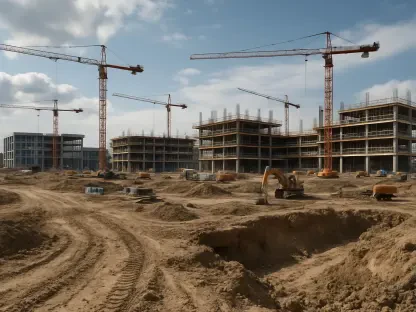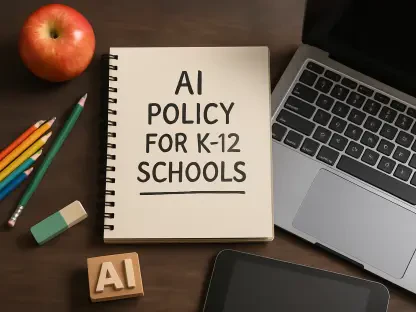Increased concerns over Wisconsin’s 2025-27 biennial budget have painted a troubling picture for rural school districts in the state, with many finding the allocated funding insufficient to address their significant budgetary needs. Districts such as Portage, Baraboo, Mauston, and Wisconsin Dells are at the forefront of this financial struggle, voicing the shortcomings in the new budget to bridge gaps in essential resources for K-12 education. Despite some progress with increases in special education reimbursements, the budget fails to confront the root causes of long-standing financial issues that afflict these rural areas. This shortfall in funding is exacerbated by a shift of financial responsibility from state aid to local property taxes, sparking frustration and concern among district administrators about the sustainability of this approach. As these communities grapple with financial challenges, a broader discourse emerges on the implications for public education financing and the pressing need for substantial reforms in funding structures.
The Complexities of Budget Allocation
Wisconsin’s financial inadequacies in the proposed budget manifest in various forms, affecting rural districts differently. Strikingly, the narrative across these regions is consistent—there is a prevailing sentiment that while slight increases have been introduced, they are superficial and fail to address deeper financial constraints. Karen DeSanto, a representative for both Baraboo and Portage districts, exemplifies this perspective by articulating the disparity between what is offered and the actual educational needs of the districts. Recent changes, although deemed improvements over the initial Joint Finance Committee proposals, still leave significant gaps unaddressed, highlighting a tension between existing budget allocations and actual requirements for efficiently running school operations.
Moreover, the Mauston School District demonstrates the tangible outcomes of these financial decisions. Superintendent Joel Heesch offers insights into the abrupt shift from initial optimism about the proposed budget to a more skeptical outlook upon further examination. Despite some funding through a four-year operating referendum initiated in February 2024, the district faces a reduction of approximately $490,000 in state aid for the 2025-26 school year. This decline severely impacts resource allocation and prompts a recalibration of fiscal strategies. The expected $325 per pupil increase, moved from state support to local property taxes, represents a prominent source of frustration. Such fiscal maneuvering underscores growing concerns over the challenges rural districts face when state contributions fall short.
Economic Pressures and Educational Impacts
Baraboo presents another case where financial strain is apparent within the district. The cost of school choice vouchers continues to rise, increasing the financial burden of facilitating private education options and diminishing any gains achieved through marginal state aid increases. Yvette Updike, Baraboo’s Executive Director of Finance and Operations, highlights the unequal increase in per-pupil funding between public and private choice programs, marking a critical pressure point among financial planners in rural school districts. The discrepancies in per-pupil funding illustrate the broader national debate on equitable funding across public and private educational systems, which impacts the ability of public schools to compete and innovate.
In Portage, Superintendent Josh Sween emphasizes persistent frustrations stemming from revenue limit inequities. Operating on additional taxpayer funding since 2003, Portage’s fed-up sentiment is shared by administrators leaning heavily on referendums to balance budget shortfalls. An $18.5 million referendum that expires soon adds to the urgency for credible, longer-term fiscal adjustments. Without the passage of substantial referendums and equipped only with marginal budget tweaks, adequate financial management becomes exceedingly challenging. The completion of these referendums, combined with an inadequate state budget, could leave the district severely underfunded, struggling to provide essential educational services.
Insights from Financial Disparities
In Wisconsin Dells, the end of a four-year, $4.8 million referendum coincides with a reduction in state aid, illustrating the severe longevity of budgetary distress affecting many districts. Administrator Terry Slack expresses apprehensions regarding the pledged increases for special needs education. The “sum certain” cap on funding suggests that even promised increases could fall short amid inflationary pressures, necessitating innovative budgeting solutions. The shift in funding obligations to local taxpayers fuels apprehension regarding potential difficulties in passing subsequent referendums, which remain vital for staying financially afloat.
This backdrop of financial disparity is growing sharper as more than two-thirds of districts face cuts in state aid across the state. These reductions compound pressure on smaller communities, where the capacity to rely on property taxes varies considerably. Consequently, administrators are forced to make difficult decisions, often involving program cuts that impact educational quality. The unequal distribution of financial burden underscores deeper systemic issues in education funding, related to both fiscal policies and inherent socioeconomic disparities.
A Call for Comprehensive Reforms
Amidst these financial challenges, there emerges a unified call for comprehensive reforms that go beyond temporary fiscal adjustments. The overarching concern is the structural transition to local property tax funding, which, while necessary for some districts, poses challenges in others with limited economic resources. As educational costs climb, and state support wanes, this funding model risks aggravating disparities among districts, catalyzing a cycle of perpetually underfunded rural schools. The dichotomy between public and private educational investments adds another layer of complexity, demanding a critical reassessment of policy frameworks to guarantee sustainable financial strategies.
The proposed budget does offer incremental improvements, yet the sentiment in educational circles is one of a continuous yearning for meaningful policy change that aligns resources with educational goals. School leaders are rallying for reform in state education funding formulas that have long incurred criticism for inequities. With comprehensive policy revisions and a commitment to securing equitable, sufficient funding models, rural Wisconsin schools can aim to transform these financial challenges into opportunities for enhanced educational delivery.
Charting a Path Forward
Concerns are mounting over Wisconsin’s 2025-27 biennial budget, painting a grim picture for the state’s rural school districts. The funding set aside is widely deemed inadequate to meet the pressing financial needs these districts face. Schools in areas like Portage, Baraboo, Mauston, and Wisconsin Dells are prominently highlighting the budget’s failure to provide sufficient resources for K-12 education. Although there have been some improvements, such as increased reimbursements for special education, the budget does not tackle the fundamental financial issues that have long plagued these rural locales. Adding to the distress is the shift in financial burden from state aid to local property taxes, stirring frustration among district leaders who question the long-term viability of this shift. As these districts wrestle with financial woes, a larger debate unfolds about the impact on public education funding and the urgent need for crucial reforms in funding strategies to ensure equitable and sustainable school financing for all communities.









